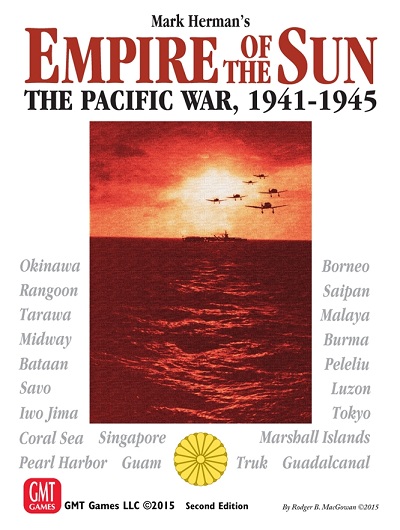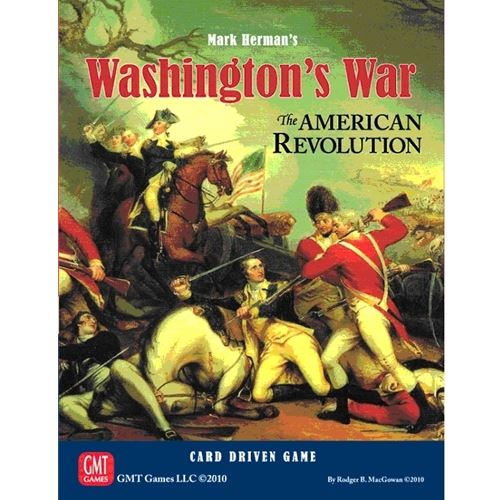To the uninitiated, wargaming might look like an impenetrable series of paper hex-and-counter maps (unless you play card-driven wargames), coupled with dense, chart-filled rulebooks that play out much the same way: alternate moving squares atop hexagons, roll some dice, the winner is the one who’s still alive at the end.
In reality, wargaming spans as broad and diverse a design landscape as euros(or ameritrash) does. You do have those taut, turn-by-turn battles, sure, but, as we’ve seen with the Levy-and-Campaign system and the chit-pull mechanism in Celles, you can play out history in many, many different ways.
Today we’re looking at another system, the card-driven wargames, or CDG, and how a deck and drawn hand can transform the intimidating to the approachable.
What is a Card-Driven Wargame?
While there are many wargames with cards, like Memoir ‘44, what we’re looking at here are titles like Paths of Glory and Twilight Struggle, games that narrow their broad scope to the cards in your hand. Each of those cards will typically offer an event or a number of ‘ops’ points, which can be spent to move troops, conduct operations (hence ‘ops’ points), or other actions unique to the game. You’ll have the same broad goal as in most wargames, whether that’s taking territory or destroying the enemy, but you’ll achieve it by hitting the right events, or deploying those ops points, better than your opponent.
Let’s talk ops points first, as those are the closest to what you’d be doing in a non-CDG wargame (or in most other games too). Many (but not all!) CDG games eschew a hex-based map, instead offering point-to-point movement, both because those points can be labeled to work with events and to allow vast swaths of territory to be covered with relatively little movement. In general, with a CDG, you’ll be in the action fast.
When you play a card for ops points, you’ll have an options menu, each with their own cost, based on the CDG you’re playing. Say, in Twilight Struggle, you want to bolster your support in France – you might spend an ops point to increase that support by one. If, though, your opponent controls France, upping your influence will cost two ops points, so you might opt for the riskier realignment roll instead, spending a single ops point and hoping the dice gods are with you. Roll well enough and you might cost your opponent two or three influence points. A bargain revolution!
Playing cards for ops points in a CDG plays into the tricky balance these games often present, as these cards tend to go into a discard pile (whether its shared or personal depends on the game) to show up again, whereas playing a card for its event will often remove it from the game entirely. Why’s that a big deal?
Because events are, well, game-changers, especially in card-driven wargames.
CDGs are historical wargames, and that means they need to model the conflict you’re playing. Events do this by imitating what really happened, which  often means major troop swings, influence adjustments, or even pure points. Most events, much like in their real-life counterparts, will benefit one side over the other, so timing their play to when it’s best for you (or, perhaps, the least worst) is often the key to winning.
often means major troop swings, influence adjustments, or even pure points. Most events, much like in their real-life counterparts, will benefit one side over the other, so timing their play to when it’s best for you (or, perhaps, the least worst) is often the key to winning.
For example, in Empire of the Sun, a CDG covering WW2’s Pacific Theater, the Allies want a key event to come out to unlock one of their win conditions. That event lives in the Japanese player’s deck, and it’s a darn powerful card for the Axis. Do you risk giving the Allies an opening by playing it, or do you try and muddle through without its immense benefits? It’s a tense call, and one that does a great job pulling you into history.
Events are the flavor on top of the dry, nutritious ops actions in a CDG, and they introduce perhaps the only cautionary tale in the design: someone who plays a single CDG enough to memorize the deck is going to have a definite advantage over someone who doesn’t know what to expect. Much like an experienced Chess or Go player is going to beat a novice, a CDG can be played with tournament-level skill or with free-wheeling delight, without a focus on card knowledge.
Which way you prefer is up to you, though if a more competitive environment is what you seek, Twilight Struggle offers a voracious tournament scene. Until you’re ready to wage the Cold War with the veterans, though, you might want to pick a gentler start.
The Best Beginner Card-Driven Wargames
Getting into card-driven wargames follows the same axiom as any other: pick a theater that interests you, and go from there. That being said, a few stand out as great options for beginners, whether to CDGs or wargaming in general. These titles help you learn hand management without vast scale or playtime requirements, along with slimmer rules to keep you and your opponent(s) engaged.
First, Washington’s War. This update of classic We the People puts you and an opponent in the Revolutionary War, where dice-driven combat melds with a flexible CDG system for a lightning game. The colorful, point-to-point board makes for an easy jump from euro games or area-control titles (even abstract fans, like Go players, will find similar surrounding tactics here). A sub two-hour playtime is even more attractive, making it easy to swap sides and replay to see who’s better at driving the redcoats away.
fans, like Go players, will find similar surrounding tactics here). A sub two-hour playtime is even more attractive, making it easy to swap sides and replay to see who’s better at driving the redcoats away.
For a more modern take, Twilight Struggle: Red Sea – Conflict in the Horn of Africa offers a stepping stone to its father mentioned above. Slimming the board size and the play time (under an hour), Red Sea introduces all the concepts from the larger game without quite so many things to track or plan for. If you’re uncertain whether you’ll like CDGs, or wargames with a more political bent rather than actual combat, this is a great place to begin. And hey, if you love it, you can add in the Red Sea cards to the full Twilight Struggle game to spice up the experience.
Like Horizons of Spirit Island and Gloomhaven: Jaws of the Lion, Red Sea adopts a fantastic design philosophy by literally letting you integrate an introductory experience with the larger one, thus not leaving you with an unused box in your collection.
Lastly, with a bit of a different flavor and a jump to an unusual period, 1918: Brother Against Brother (Antti Lehmusjärvi) provides a solid CDG leap from Washington’s War and Twilight Struggle into a more traditional counter combat format (though we’re still playing point-to-point here, not hexes). You’re diving into the Finnish civil war, and you’ll use roads and rails to tread the multiple paths to victory for either side.
Beyond the neat setting (the cards come in dual language editions, so you can pick up some Finnish as you play), Brother Against Brother introduces more sweeping events that can dramatically change the balance of the game, forcing both sides to plan for (or depend on) their arrival. It’s both fun to play and builds a great skill foundation for the bigger CDGs we’re about to cover, and is easy enough to learn that you can break it out with your non-wargaming pals as a leap to a whole new tabletop world.
New Card-Driven Wargames Worth Your Time
If you’ve been nodding your head reading this article, muttering designer Mark Herman’s name over and over again, this is the section for you: a highlighted run-through of newer CDGs worth checking out:
First up, a classic with a new, 2024 facelift for its 25th anniversary: For the People. A US Civil War CDG, For the People (Mark Herman) is a strategic-level wargame, covering not just land battles but amphibious assaults, foreign involvement, and political machinations across a sprawling, point-to-point map of  the southeastern US. While not the absolute heaviest CDG out there, For the People embraces its scope. Start with slimmer scenarios to get a hold of play before leaping into the full campaign. The new edition comes with a beautiful mounted board and some rules clarifications, making it the best way to jump into this game.
the southeastern US. While not the absolute heaviest CDG out there, For the People embraces its scope. Start with slimmer scenarios to get a hold of play before leaping into the full campaign. The new edition comes with a beautiful mounted board and some rules clarifications, making it the best way to jump into this game.
Next, let’s turn back the clock all the way to the Roman Empire with 2020’s Caesar: Rome Vs. Gaul (Mark Simonitch). Similar to Hannibal: Rome vs. Carthage, Caesar pits two players against one another with 8-card hands and a map of Western Europe to dominate. Faster and with a narrower focus than For the People, Caesar is a game bent on action. You’ll roll across the point-to-point map, vying for control of key objectives. A nice, colorful production with fantastic card art, Caesar offers a strong stepping stone from the starter CDGs mentioned above to deeper fare.
While both Caesar and For the People are longer games, CDGs work equally well in faster form, which you’ll find in 2021’s Red Flag Over Paris (Fred Serval). The narrow focus on the struggle over Paris between the Communards and the French government slims down the map and the number of rounds, making every decision matter. You’ll have options to buy critical events discarded by your opponent as you dance between military and political arenas, culminating in a tense finale after a half-hour or so of play. For CDG fans or wargamers looking for a smaller title or one suited for side-swapping tournament play, Red Flag Over Paris is one worth adding to your list.
The narrow focus on the struggle over Paris between the Communards and the French government slims down the map and the number of rounds, making every decision matter. You’ll have options to buy critical events discarded by your opponent as you dance between military and political arenas, culminating in a tense finale after a half-hour or so of play. For CDG fans or wargamers looking for a smaller title or one suited for side-swapping tournament play, Red Flag Over Paris is one worth adding to your list.
The Last Hand
Card-driven wargames are a huge genre, but a special one, with plenty to explore inside an approachable framework. If you’ve dismissed them as lacking depth compared to more sprawling, less directive hex-and-counter titles, then you’ll be pleasantly surprised by the juicy decisions every turn, and every hand, provides. If you’ve yet to take the plunge into the wargaming world, CDGs bridge the gap with euros, giving you and your gaming group an easier leap into a wonderful side of the hobby.
So next time you’re looking to add to your collection, take a look at some of the options above and find a wargaming deck to shuffle. You’ll be glad you did.
